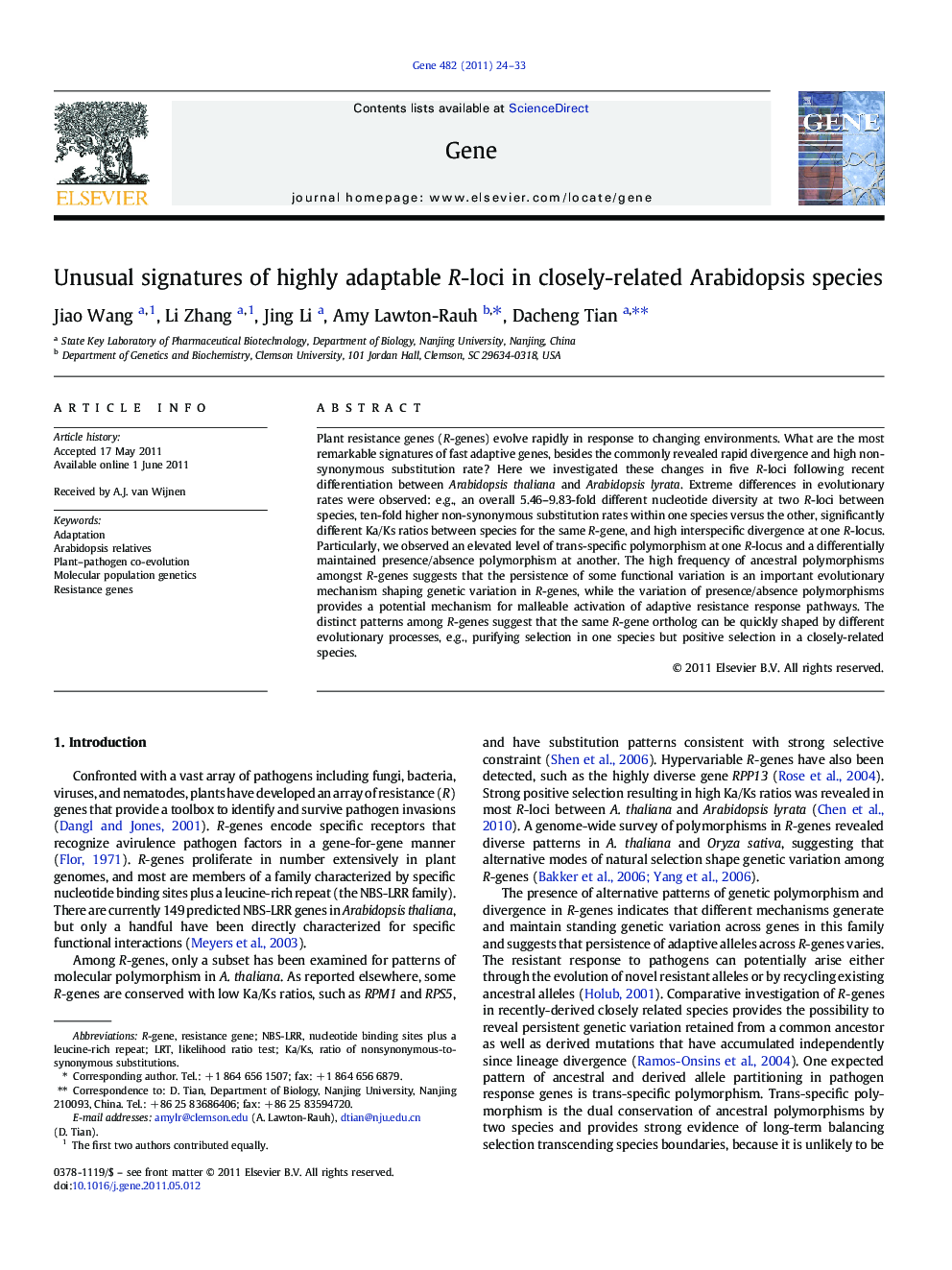| کد مقاله | کد نشریه | سال انتشار | مقاله انگلیسی | نسخه تمام متن |
|---|---|---|---|---|
| 2818381 | 1569856 | 2011 | 10 صفحه PDF | دانلود رایگان |

Plant resistance genes (R-genes) evolve rapidly in response to changing environments. What are the most remarkable signatures of fast adaptive genes, besides the commonly revealed rapid divergence and high non-synonymous substitution rate? Here we investigated these changes in five R-loci following recent differentiation between Arabidopsis thaliana and Arabidopsis lyrata. Extreme differences in evolutionary rates were observed: e.g., an overall 5.46–9.83-fold different nucleotide diversity at two R-loci between species, ten-fold higher non-synonymous substitution rates within one species versus the other, significantly different Ka/Ks ratios between species for the same R-gene, and high interspecific divergence at one R-locus. Particularly, we observed an elevated level of trans-specific polymorphism at one R-locus and a differentially maintained presence/absence polymorphism at another. The high frequency of ancestral polymorphisms amongst R-genes suggests that the persistence of some functional variation is an important evolutionary mechanism shaping genetic variation in R-genes, while the variation of presence/absence polymorphisms provides a potential mechanism for malleable activation of adaptive resistance response pathways. The distinct patterns among R-genes suggest that the same R-gene ortholog can be quickly shaped by different evolutionary processes, e.g., purifying selection in one species but positive selection in a closely-related species.
Journal: Gene - Volume 482, Issues 1–2, 15 August 2011, Pages 24–33